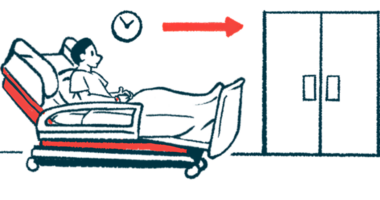Aerobic exercise may help Parkinson’s patients after DBS
Researchers say more trials should include patients who have had DBS

Aerobic exercise may help relieve non-motor symptoms of Parkinson’s disease in people who have undergone deep brain stimulation (DBS), a small study suggested.
The researchers said there’s a need for more studies on exercise and Parkinson’s patients who have had DBS, a surgical treatment that involves implanting an electrode to deliver gentle electrical stimulation to specific parts of the brain. DBS can be an effective treatment for the motor symptoms that characterize Parkinson’s. However, the neurodegenerative disease also causes nonmotor symptoms like anxiety and depression, for which DBS isn’t generally very effective.
Exercising has well-established health benefits in Parkinson’s, and studies have suggested that regularly participating in aerobic exercise (exercise that increases the heart rate) can help to ease non-motor symptoms of the disease. Research in this area has generally focused on people in the early stages of Parkinson’s, and most studies have excluded people who’ve undergone DBS.
The researchers set up a trial involving nine people with Parkinson’s who were receiving DBS, instructing them to participate in aerobic exercise for at least 30 minutes, three times a week, for 12 weeks. Any type of aerobic exercise was allowed, as long as it got the heart rate up. Non-motor symptoms were evaluated at the beginning and end of the study.
The study, “The Effect of Exercise on Nonmotor Symptoms in Parkinson’s Disease with Deep Brain Stimulation,” was published in Movement Disorders.
Exercise and Parkinson’s
Eight of the nine participants completed the 12-week study. About half exercised for 30 minutes three times per week as instructed.
The patients who exercised as directed saw large effects on non-motor symptoms including depression, psychosis, impulse control, and pain. In domains where initial scores were above average on the Movement Disorders Society-Nonmotor Scale (MDS-NMS), exercise showed moderate to significant benefits, particularly in the areas of cognition, sleep, pain, gastrointestinal, and urinary symptoms.
The researchers said the findings lend credence to the idea that exercise could help ease non-motor symptoms in Parkinson’s patients who have undergone DBS, though they stressed that further studies are needed to verify the results.
“Nearly all [aerobic exercise] studies exclude participants with DBS, demonstrating the need for further research,” they wrote. “This is particularly important as the burden of [non-motor symptoms] increases with advanced disease, with detrimental impact on quality of life.”







